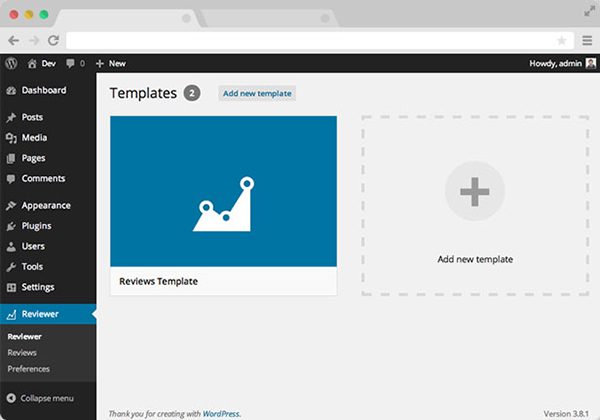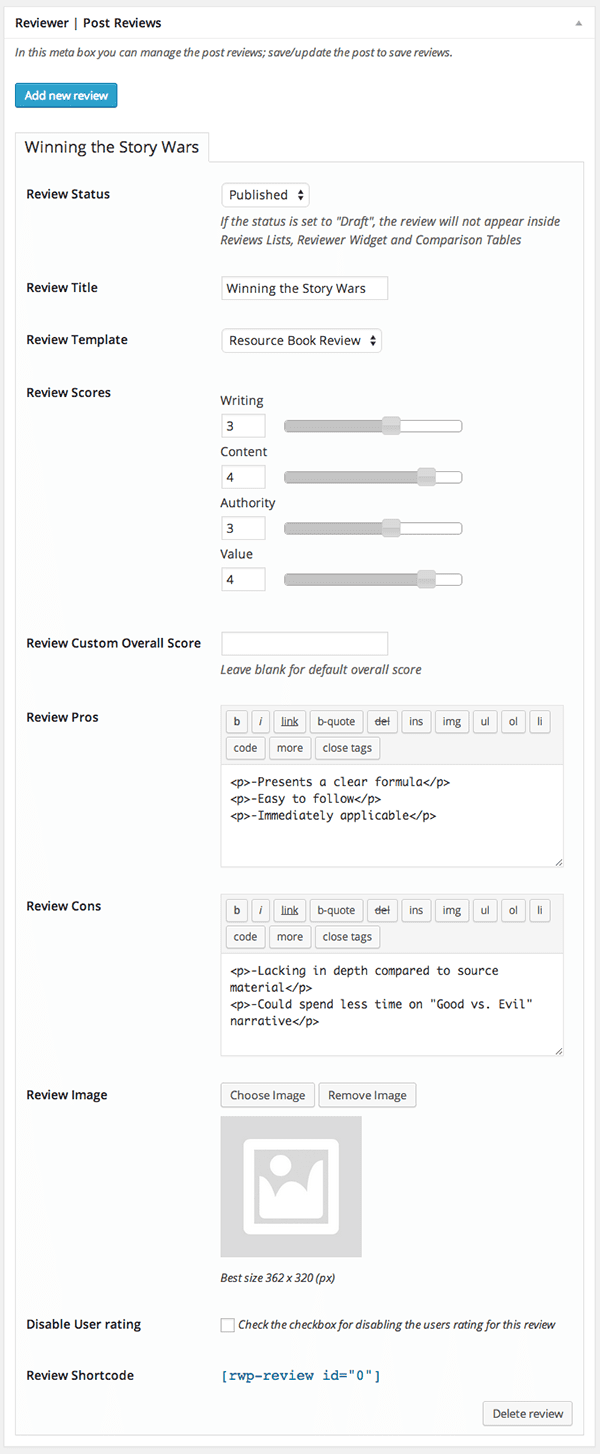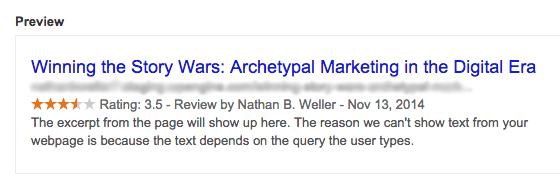 Writing reviews for books, movies, gadgets, and more has been a ubiquitous part of the blogging experience from the very beginning. After all, it’s only natural that in the course of thoroughly covering a blog topic that a blogger might want to introduce or evaluate a product for their readership.
Writing reviews for books, movies, gadgets, and more has been a ubiquitous part of the blogging experience from the very beginning. After all, it’s only natural that in the course of thoroughly covering a blog topic that a blogger might want to introduce or evaluate a product for their readership.
Add affiliate marketing to the equation and the rise of user reviews as a key determining factor in most people’s purchasing decisions and you’ve got the perfect conditions for a flourishing ecosystem of WordPress review sites. Which is exactly what we’ve seen over the last several years. As a result developers have responded to demand by creating a wide variety of tools for WordPress users interested in creating review sites.
If you’ve ever considered joining those ranks, then today’s post is for you. In the sections below I’ll be going over the essential elements of a good WordPress review site, discussing the big decision of theme functionality versus plugin functionality, and then walking you through my own review site setup.
The Essential Elements of a WordPress Review Site
Creating a WordPress review site is extremely straight forward. Technically speaking, you don’t need anything but a WordPress blog (on which you write reviews) for it to be considered a “review site”. However, over the years certain best practices have sprung up around the best and most successful review sites. I’ve highlighted what I consider to be the most essential ones below.
1. A Review Template
This could be a complete custom post type or a piece of styled content within a post or page. Regardless of the form it takes, having a consistent format for your reviews has become the standard.
2. Rating System(s)
Many review plugins and themes come with two rating systems. One is the rating system used by the reviewer themselves. The other is for readers to submit their own ratings, aptly known as the user rating system.
3. Rich Snippets
If you’re not familiar with the term “rich snippets” I can guarantee you that you’ve seen them in action. Every time you do a Google search for something and the search results include entries like the one I’ve included below, you are looking at a rich snippet.

A rich snippet is nothing more than the ability for a search engine to display your review ranking along with your search result. This practice greatly increases the amount of organic traffic a review link tends to generate.
Everything else about a good review site more or less lines up with what it takes to run a great blog in general. For an exhaustive post on that topic, please see my post from earlier this year titled The Future of Blogging.
WordPress Theme or WordPress Plugin?
This question may not occur to everyone but I promise you it is an important one to consider. When creating your review site, do you choose a theme that has all your functionality built in or do you add that functionality via a plugin?
Official WordPress development best practices strongly suggest that all additional functionality be added to your site via a plugin. The reasoning is simple: if you ever want to change themes, you don’t want important additions to your website to have to go along with it.
For me at least, reviews belong to the category of things I’d rather not have to delete or painstakingly migrate to another theme just because I want a design update.
On the other hand, I suppose I could be ok with using a really great parent theme that I’m confident will always be around. Just so long as it was reasonably easy for me to update the look and feel of the site as I went along and I never had to toss out my hard work.
In the end it’s a decision you have to make based on your own preferences. I think the most important thing is that you are aware of what you’re getting into from the beginning so that you can plan accordingly.
How I Chose to Create My WordPress Review Site
I’ve had a blog that I add to from time to time but haven’t really made the time to develop seriously until recently. It’s still a work in progress, but I decided that one thing I wanted to do was begin reviewing a lot more products related to my main topic of storytelling. Everything from fictional books and movies to writing software and other tools for creating stories.
The idea being that since I’m already reading, watching, using, and testing these items, I might as well share my thoughts on them. The insights I provide may help my readers make more informed purchases, the traffic generated from rich snippet will encourage overall growth, and if I happen to make a few bucks on affiliate links along the way, I certainly won’t complain.
In my case, I didn’t have the choice to opt for a theme with built in reviewing features/functions. I’ve been using the same framework with steadily evolving changes to the child theme for a while now and I like it quite a bit. So I browsed around and found the plugin that best suited my needs.
I ended up going with Reviewer WordPress Plugin by egoG, which I found over on Code Canyon. It’s one of many possible plugins I could have chosen, but in my special circumstances this one proved to be the best fit.
If you’d like to browse some of the best review plugin options available for yourself, check out another post we did here in September called A Look At Some Of The best Rating & Review Plugins for WordPress. It contains both free and premium options, all of which I took into account before making my choice.
The deciding factors for me where as follows:
- Already having a framework and child theme in place (which do not have review functionality) I needed the ability to seamlessly add review functionality to my current site.
- I liked the idea that it came with two different rating systems: editorial and user. I think as my community grows this will become a valuable and appreciated feature.
- I needed the ability to easily add review stats to existing posts.
- I needed the ability to create a wide range of customized review templates (one for fictional books, one for resource books, one for movies, one for software, etc.) all with their own sets of criteria.
- Anyone who has ever had to compare and contrast several different products by manually building a features table will know that the ability to auto generate comparison tables using existing reviews was huge. This feature is such a time saver when comparing and contrasting apps, plugins, even books.
- And of course, automatic support and implementation of rich snippets meant that my search results would receive a nice boost thanks to the added review stats.
The Reviewer WordPress plugin has many more features, but for me those were key. Everything else was more or less icing on the cake.
My Process
After purchasing the plugin and installing it, I jumped into configuration hoping it wouldn’t be too extensive. Thankfully, it was a breeze. It only took me a matter of minutes to get the hang of how it all worked. Of course I proceeded to tinker with it for a lot longer than a few minutes, but I won’t bore you with those details. Just the final product!
My first step was to create some new review templates. I navigated to Reviewer (the new admin menu) and clicked on the “Add New Template” prompt.

Since I already had a storytelling resource book I had recently reviewed, I decided to create that template first and test it on my existing review post. I had the option to choose from the following themes.

After choosing my theme and adding customized review criteria, I was able to use hex codes to match the theme colors to my current blog design. It was now time to add a review to my existing post. To do this I opened my post in the editor and scrolled down to the bottom where a new set of meta boxes now exist


Since this was my first review, there was no need to add a comparison table. Instead I simply filled in the data fields in the review meta box and used the visual editor buttons below to insert the review into my post.

When it was all said and done, my efforts resulted in the image below. I have to say, I’m pleased with it. The design matches my theme and the review adds value to my posts. The rich snippet search results boosts traffic to my site and the added engagement promotes the growth of my community. Only time will tell if it will also improve my budding affiliate business, but to me that is secondary.

As you might have noticed, by the time I got everything the way I wanted it I not only changed the color scheme slightly from the default review theme, but I added lines to the top and bottom of the review as well as an affiliate button to the bottom. All of this was accomplished without touching a single line of html or css.
As I mentioned above, each review theme allows you to change the color scheme with hex codes, so that was a simple matter of matching my theme colors. As for the lines and affiliate button, those were created using the free plugin Shortcodes Ultimate–which I mentioned in a recent post here on Elegant Themes about getting the most out of WordPress shortcodes.
Oh, and it doesn’t look half bad as a search result either!

In addition to these features there’s actually still quite a bit to this plugin I’d like to experiment with. I still need to create different templates for each type of review I plan on creating, I haven’t finished tweaking the featured review widget that comes with it, and I’d like to include some featured reviews on my homepage at some point too–which is possible using the automatically generated shortcodes.
Regardless of what those specific actions turn out to be, they will all be derivative of this first experiment. As you can see, the whole process was relatively easy and straightforward. The hardest part, in my opinion, was figuring out which plugin to choose in the first place.
In Conclusion
WordPress review sites have become a staple of the blogging world. As such, the tools needed to create a high quality one of your own are readily available in the form of both free and premium WordPress themes and plugins. That being the case, it’s important to take the necessary time to focus on your content needs first and only choosing the tools you’ll need after you know how they fit into your overall strategy first.
Contact Paige Duewel today!
Cell: 843-422-5665
Email: paige@marketingsolutionshhi.com
Website: https://marketingsolutionshhi.com/






